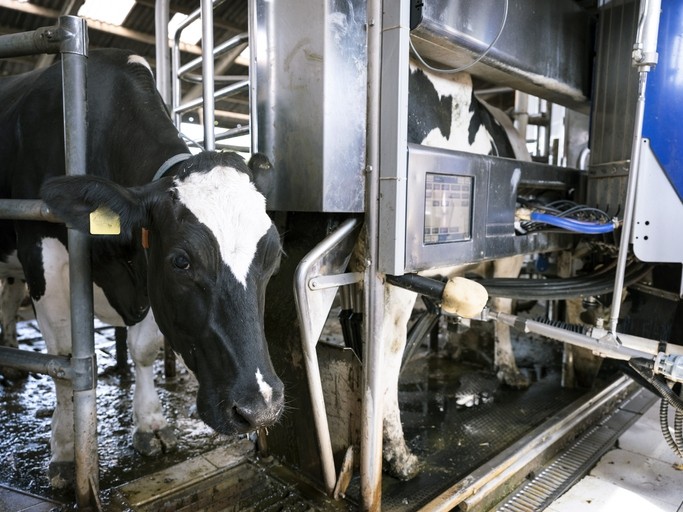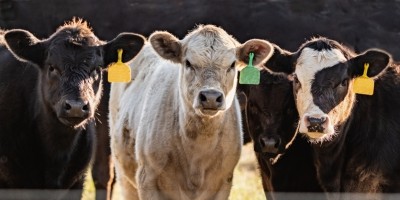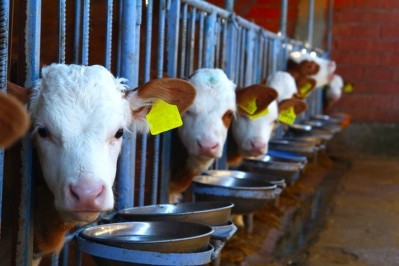Flaxseed additives may boost dairy cow health, milk production

Researchers with the University of California explored the use of a flaxseed-based feed additive (LinPro) in the diets of dairy cows as a way to increase the level of omega-3 long chain fatty acids in milk and potentially to improve reproduction.
They evaluated the use of the feed additive, substituting mainly for cottonseed, on reproduction and milk production through 150 days in milk (DIM).
The researchers published details of their project in the journal, Animal Feed Science and Technology.
“We did the entire feeding study to see all the impacts we’d have on the cows – not just would it go into the milk, but what would it do to the cows and reproduction and so on,” said Nadia Swanepoel, corresponding author and postdoctoral researcher at the university.
There was a consideration that adding the fatty acids to the cow diets could alter reproductive performance, she told FeedNavigator. “We were wondering if we could increase and improve the reproduction of the cows as well as improving the omega-3 content,” she added.
The feeding trial was successful in several areas, she said. “It does increase all the omega 3s and that has a bunch of health-related possibilities,” she added.
However, the body condition of cows receiving the supplement initially dropped and recovered and the first service reproduction results were not improved, she said.
“Depending on what a farmer wants from his cows, this has a lot of advantages,” Swanepoel said. “It definitely improves milk production, it improves the health of the cows – if you can look past the fact that it didn’t help first service production, it has major positive impacts.”
Why use flax-seed in dairy diets?
Previous research with dairy cows has found that dairy cow health and pregnancy rate can be improved by adding PUFAs that are available for post-ruminal use, the researchers said in the study.
High production dairy cows often have an additional fat source in their duet to support milk production and limit the mobilization of body fat, they said. The supplement fats also may provide additional benefits including by adding omega-3s to the milk generated.
However, dietary supplementation of PUFA-rich fats is considered an “inefficient mechanism” to add omega-3 levels to milk, they said.
It can be challenging to protect polyunsaturated fatty acids (PUFA) and have them survive passage through the rumen, added Swanepoel. However, the flaxseed-based feed additive was developed using a new process to protect that element.
Flaxseed contains a high concentration of α-linolenic acid (ALA), which is a precursor to other omega-3 fatty acids including EPA and DHA, the researchers said. While ALA is unlikely to survive the rumen if fed as a pressed or crushed ingredient, the process of dry extrusion may provide additional protection.
The feed supplement, LinPro, was generated by dry extruding pea grain, flaxseed and alfalfa in a proprietary process to provide a rumen stable version of PUFAs, including ALA.
Feeding trial details
In the feeding trial, cows were given one of three rations, the researchers said. Diets were formulated to be “iso-nutritious for proximate nutrients.”
The feeding trial started with 622 cows, however, 520 completed the study, they added. Several were removed for reasons including health challenges and the need to be absent from pens receiving the trials feeds for extended periods.
The diets included a control with none of the flaxseed-based supplement (NoLin), to have 25g/kg dry matter of the supplement (LoLin), or to have 50g/kg DM of the supplement (HiLin), they said.
Feed intake and refusals were recorded daily, they said. Samples of feed and feed ingredients were collected at periods throughout the study for analysis.
Cows were bred for the first time between 68 and 74 DIM and pregnancy was checked and tracked through 150 DIM, the researchers said. Cows not found to be pregnant were rebred then assessed, the researchers said.
Milk yields were noted for the first milking every month and milk samples were taken for compositional analysis and milk energy was determined, they said. A selection of cows on each diet was checked for body condition score (BCS) and blood samples were taken on days 6, 13 and 20-post first service for analysis.
Results and remaining questions
Dry matter intake was similar for cows on all the diets, the researchers said.
In terms of total milk production and generation of fat, protein and lactose cows on the LoLin diet high the highest performance at 28 DIM but were similar to cows on the HiLin diet by 58 DIM, they said. At 85, 116 and 150 DIM cows receiving the HiLin diet outperformed cows on the other diets.
However, by 150 DIM cows on the control diet had higher milk fat proportions and all cows had similar milk protein proportions, they said. Cows on the supplemented diets had a decline in BCS early in the trial but recovered by 116 DIM.
The drop in body condition score was unexpected, said Swanepoel. However, cows also recovered the loss quickly.
“It seems to have been some kind of adaptation that the cows had to go through,” she said. “It does happen now and then with certain things you start feeding them and they have to adapt. They seemed to recover pretty well and then had the improvement in milk production, which is a great positive on the farmer's side.”
The fatty acid profile of the milk changed as more supplement was added to the diets, the researchers said. Several fatty acids increased as the additive was used, some decreased and a few increased more for cows on the HiLin diet.
Plasma amino acids were similar for all cows and aspartic acid feed as more of the feed additive was included in the diet, they said.
Cows on the supplemented diets had lower culling rates for mastitis, although culling for physical injury tended to increase, they said. Cows on the LoLin diet saw the fewest culled for mastitis.
Conception rate for the first service declined as more of the supplement was added to cow diets, they said. However, conception rates for the second service were not altered by diet.
“We hoped that it would have a positive effect on the first service reproduction because all the research previously done [suggested] if the fatty acid went to the milk then it should have the positive impact on reproduction,” said Swanepoel. “Which goes to show, [with] these high producing cows there’s something else that needs to be addressed in their first service reproduction that cannot be done, I think, nutritionally – nutrition doesn’t seem to impact them no matter what you do.”
However, the results for the second service were “highly positive,” she added.
“The first service reproduction, in my opinion, is not that big a deal because they would rebreed these cows,” she said. “They will get pregnant later anyway, and I’m happy about more milk and healthier milk.”
The cows receiving the feed supplement also were healthier, she said. “That was a definitive advantage that we’ve not seen before,” she added.
“It’s hard to see an improvement in mastitis in cows because it’s so variable … and this was a farm that already had low mastitis values, so they already had healthy cows and we still saw an improvement that was quite dramatic,” said Swanepoel.
The improvement in health provides more opportunity for dairy producers, she said.
“It means they get to select which cows they get rid of in the end – selective culling instead of cows falling out because of disease like mastitis,” she said. “They keep healthier cows and they can select cows they want to keep and not.”
The feed additive could be an option for organic producers or producers interested in generating a value-added product, said Swanepoel.
Looking forward there could be additional research done exploring different ways to introduce the feed additive, either by feeding it to cows earlier or adding it more slowly, she said. “If you could introduce it earlier and prevent that drop that might be great for them – but we have no way of testing that now,” she added.
Source: Animal Feed Science and Technology
DOI: published online before print: doi.org/10.1016/j.anifeedsci.2019.03.008
Title: Impacts of feeding a flax-seed based feed supplement on productive and reproductive performance of early lactation multiparous Holstein cows
Authors: N. Swanepoel, P. Robinson















